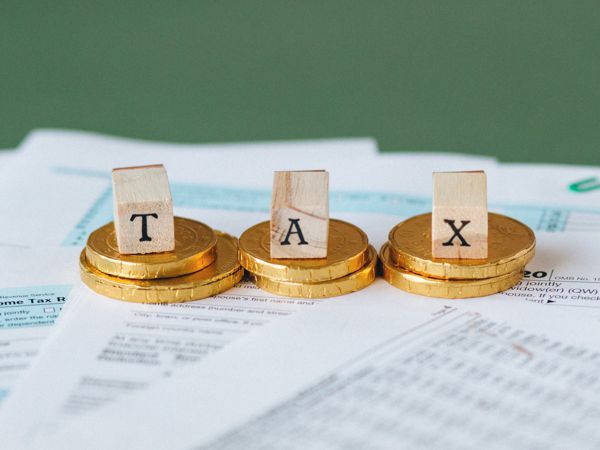Machinery Buyers Guide For Bonus Depreciation Tax Savings In 2021

Uncle Sam Wants To Help Buyers Of New & Used Machinery
Machinery plays a vital role in our economy. It's the backbone of agriculture, construction, manufacturing, and transportation. Without it, we wouldn't be able to grow food, build infrastructure, or move goods efficiently. The investments made in machinery are essential for maintaining high productivity levels across industries. Recognizing this, Congress has long supported capital investments—especially in machinery and research and development—as key drivers of long-term economic growth. That’s why these types of investments often receive favorable tax treatment, including bonus depreciation. Bonus depreciation is a powerful tool that encourages businesses to invest in new and used equipment. By allowing companies to deduct a large portion of the asset’s cost upfront, it helps reduce taxable income and improve cash flow.What Types Of Purchases Qualify For Bonus Depreciation?
Under current IRS rules, bonus depreciation applies to "qualified property"—tangible personal property with a recovery period of 20 years or less. This includes most heavy machinery like tractors, excavators, cranes, forklifts, and more. Importantly, used machinery can also qualify as long as it wasn’t previously owned by the buyer. This rule changed in 2017, when the law was updated to allow bonus depreciation on used equipment. Before that, only new purchases were eligible. However, not all purchases qualify. Real estate improvements, land, and certain vehicles are excluded. Additionally, there are specific limitations for car purchases, and farm equipment now has a shorter recovery period under the new tax law.How Is Bonus Depreciation Calculated?
Depreciation is the process of allocating the cost of a long-term asset over its useful life. There are different methods for calculating depreciation, but for tax purposes, the IRS uses the Modified Accelerated Cost Recovery System (MACRS). Businesses often use two depreciation schedules: one for financial reporting (book depreciation) and another for tax purposes (tax depreciation). Tax depreciation allows for accelerated deductions, which can help reduce taxes more quickly. In 2021, the bonus depreciation rate is 100% of the asset’s value. This means you can deduct the full cost of qualifying equipment in the year it’s purchased. If you also take advantage of Section 179 deductions, the IRS recommends using the full Section 179 limit first, then applying bonus depreciation to the remaining balance.What Is Bonus Depreciation In 2021?
As of 2021, the bonus depreciation rate remains at 100%. However, this rate is scheduled to gradually decrease in the coming years. For example, it will drop to 80% in 2024, 60% in 2025, and so on, until it phases out completely after 2027. Here’s a breakdown of the bonus depreciation schedule:| Year | Bonus Depreciation Deduction |
| 2017 | 100% |
| 2018 | 100% |
| 2019 | 100% |
| 2020 | 100% |
| 2021 | 100% |
| 2022 | 100% |
| 2023 | 100% |
| 2024 | 80% |
| 2025 | 60% |
| 2026 | 40% |
| 2027 | 20% |
| 2028+ | 0% |
Examples Of Bonus Depreciation For New & Used Machinery Purchases
**Example 1:** You buy a used Caterpillar mini excavator for $25,000. Since you didn’t own it before and it’s used for business, you can deduct the full amount via bonus depreciation. **Example 2:** A new attachment for your machine costing $3,000 qualifies for the same deduction. Attachments and accessories used with your main equipment are also eligible. **Example 3:** If you buy a lawn tractor for $1,200 but use it mostly for personal purposes, it won’t qualify for bonus depreciation. **Example 4:** If you use Section 179 to deduct the full cost of a dozer, you can’t apply bonus depreciation to the same asset. **Example 5:** If you choose not to apply bonus depreciation to one truck, you must apply the same rule to all similar assets purchased in the same year.How Does Bonus Depreciation Work With Section 179?
Section 179 and bonus depreciation both aim to reduce tax liability by allowing faster deductions. Section 179 lets you deduct the full cost of an asset as an expense, rather than depreciating it over time. This is especially beneficial for small and medium-sized businesses. Bonus depreciation, on the other hand, allows you to deduct a percentage of the asset’s cost immediately. While they’re similar in purpose, they differ in application and limits. Section 179 has a cap ($1.05 million in 2021), while bonus depreciation has no limit. It’s common to use both together. Most tax professionals recommend using Section 179 first, then applying bonus depreciation to the remaining balance.Important Note
This article is intended for informational purposes only. We are not tax professionals, and we cannot provide tax advice. Always consult a licensed accountant or tax expert before making any decisions about your taxes. Laws and regulations change frequently, and it's important to stay informed. Tax professionals are trained to keep up with these changes and can help guide you through the complexities of tax planning.Resources
- [IRS Form 4562 – Depreciation](https://www.irs.gov/forms-pubs/about-form-4562) - [How a Business Owner Got a Free Truck](#) - [YouTube Video on Bonus Depreciation](#)Find Similar Articles By Topic
#agriculture #transportation #material-handling #construction #taxesVegetable chopper, Dough blade, Slicing shredding
YIWU ACKILISS ELECTRIC CO..LTD , https://www.ackiliss.com